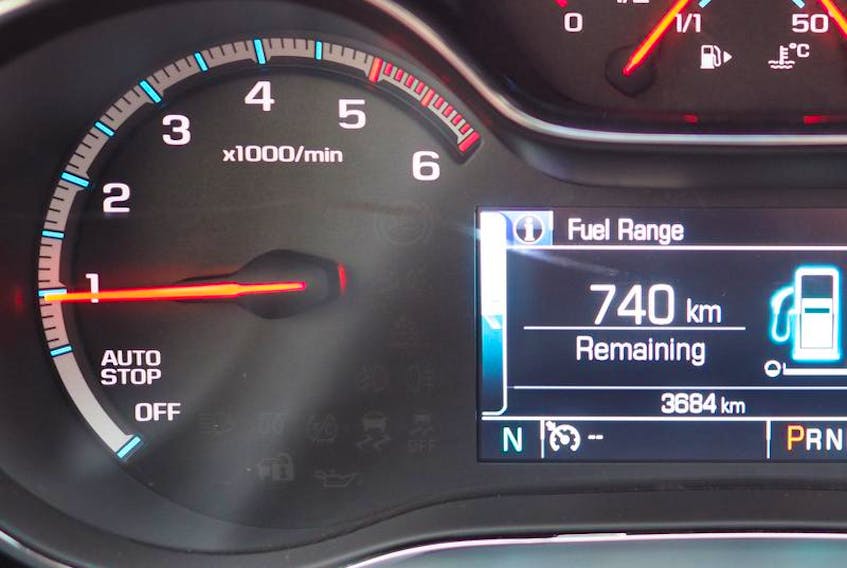Auto stop, or the engine start stop (ESS) system, is a means by which vehicles turn their engines off in many situations where they’d otherwise be idling.
In many modern cars, the engine turns itself off when the vehicle comes to rest at a stoplight, stop sign, while sitting in a drive-thru line, or in any situation where the driver is holding the brakes to keep the vehicle stationary.
While the engine is off, all accessories continue to run as normal, and when the brakes are released, the engine fires back up in milliseconds. This prevents a few seconds of idling, each time the system is engaged. In turn, this saves a small amount of fuel, and prevents a small amount of emissions from being pumped into the atmosphere.
Over the course of days and weeks, ESS intends to give you more miles per tank, and reduce your fuel bill and carbon footprint. But two things about this system seem to freak people out.
First, many drivers find it to work inconsistently, especially if they’re not aware of how the system operates. Sometimes, the engine doesn’t turn off at a stop, and other times, it does, since the ESS system needs to see certain parameters met before automatically stopping the engine. For instance, the system may not function if the engine is below operating temperature, if the battery is below a certain charge level, or if stopping the engine may cause the temperature of the cabin to fluctuate drastically on a very hot or cold day.
There’s also the starter, which many shoppers are worried about ‘burning out’ with all the stopping and restarting. I personally know people with ESS-equipped vehicles who leave the system disabled via a small switch or button on the dashboard.
I’ve also heard from readers who have avoided a car or truck with this feature, for fear of wearing out the starter, and incurring an expensive repair.
As one friend put it “with what I save on fuel, I can probably pay for a new starter when this one burns out.”
Years back, drivers likely had similar misgivings about fancy technology like power door locks, push-button engine starters and fuel injection.
I’ve logged thousands of kilometres in ESS-equipped vehicles from a range of manufacturers, without issue. Further, in my weekly used-car reviews, I rarely come across issues reported by owners of aging cars with ESS. Most issues reported are related to a weak or aging battery, or are easily remedied with a software update from the dealer.
Dr. Frank Reichenbach is the global head of product management/mild hybrid eDrives at the continental powertrain division. Continental is a leading supplier of ESS system components to automakers around the globe.
Dr. Reichenbach explains “the ESS starter is developed for many more starting cycles, since multiple warm starts are expected during each drive. The starter is optimized to start the vehicle from a warm start, and not the typical cranking cold start.”
Put another way, the ESS starter only begins stopping and restarting the engine when the engine is warm, and therefore, much easier to start. He also explains that the ESS starters are manufactured to perform many more starts and stops than a conventional starter, for a long life.
Dr. Reichenbach adds “our requirements specify operation temperatures between -40 and +80, or higher, ambient temperatures.”
Starters are subjected to durability tests which see the device operated continually at high temperatures before being immersed in ice water, or continually run at higher-than-expected speeds and currents.
“The ESS is built for lifetime use according to highest automotive standards and should have no disadvantages to the ordinary starter,” he comments. “Beside the initial investment, there should be no higher cost over the lifetime.”
The components of the ESS system can be serviced or replaced by virtually any automotive repair centre, too.
In summation: drivers should have little worry about opting for a vehicle with an ESS system and the very vast majority of drivers who use one have no issues, and enjoy reduced fuel bills and lower emissions.
Typically, all ESS system components are covered by the new vehicle’s powertrain warranty.
Still, for maximum peace of mind, be sure to stick to factory maintenance requirements, including inspections, and testing of the vehicle’s battery and charging system.
Have all available software updates applied to the vehicle as they become available, too. These can fend off potential issues, and are typically installed while your vehicle is in for servicing at its dealer.
Some regular inspection of electrical grounds, and use of corrosion-inhibiting treatments to prevent issues with poor grounding, may also be useful.
In summation, thus far, I’ve found the volume of complaints about ESS systems documented in owner forums is minuscule compared to the sheer volume of vehicles sold with the system.
The gist? Probably, you won’t run into any trouble.









